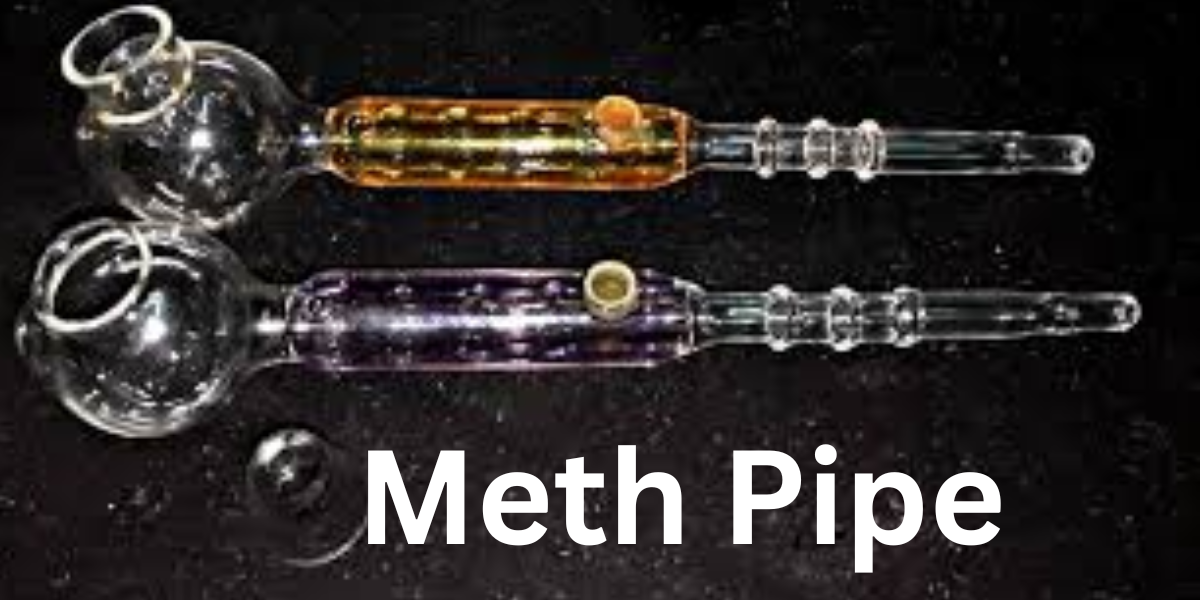A Guide to Identifying Different Meth Pipe Types
Introduction
Methamphetamine use is a serious public health issue, and understanding the paraphernalia associated with it is important for recognizing signs of substance abuse, ensuring the safety of communities, and providing necessary intervention and support. One of the most common items associated with meth use is the methamphetamine pipe. These pipes come in various shapes and sizes, each designed to facilitate the inhalation of methamphetamine in different ways.
In this guide, we’ll explore the different types of meth pipes, how to identify them, and why it’s important to be aware of these objects. Knowing what to look for can help law enforcement, healthcare providers, and concerned family members recognize signs of methamphetamine abuse.
1. The Basic Structure of a Meth Pipe
Before diving into the specific types of meth pipes, it’s important to understand the basic structure. A meth pipe is generally designed for smoking methamphetamine, typically in its crystalized form, which is heated and vaporized to be inhaled. The pipe is designed in such a way that it can effectively hold and heat the drug without burning it.
Key features of a typical meth pipe include:
- Glass construction: Meth pipes are typically made of glass because it allows the user to see the meth as it heats and vaporizes.
- Elongated shape: Most pipes are long and narrow, which helps in directing the smoke away from the user’s mouth.
- Bowl: The bowl is where the methamphetamine is placed and heated. It may have a small indentation or depression to hold the substance.
- Stem: The stem is the long tube through which the user inhales the smoke. The pipe is often curved or bent to provide better comfort and concealment.
2. Common Types of Meth Pipes
While all meth pipes serve the same purpose of allowing users to inhale methamphetamine, they come in different forms depending on design preferences, availability, and the user’s specific needs. Here are the most commonly found types:
a) Straight Meth Pipe
Description: The straight meth pipe is one of the most traditional and widely used versions. It consists of a simple, straight glass tube, typically around 4-6 inches long, with a small bulb or bowl at one end.
Identification Features:
- Straight shape: The pipe has a basic, tubular form with little to no curves.
- Small bulbous bowl: The bowl is usually situated at the end of the pipe, and it’s where the user places the methamphetamine.
- Transparent glass: The clear glass allows the user to see the meth as it vaporizes.
Usage: Straight meth pipes are simple to use, and they are among the most common pipes seen in methamphetamine smoking. They are often used for smaller doses.
b) Crack Pipe (Sometimes Used for Meth)
Description: The crack pipe is typically associated with crack cocaine but is sometimes used for methamphetamine as well. It’s usually shorter and thicker than a standard meth pipe.
Identification Features:
- Shorter and thicker design: These pipes are often much shorter and sturdier than other meth pipes.
- Glass bulb at one end: The bulb is designed to hold the substance and heat it.
- Inhalation stem: A longer inhalation tube that is typically angled and may have a small screen or metal component to filter the vapor.
Usage: While crack pipes are generally designed for cocaine, meth users have adapted them for use with meth. They can be a convenient alternative when other pipes are not available, as they are commonly found on the street.
c) Curved Meth Pipe
Description: The curved meth pipe is designed with a slight bend or curve, typically around 90 degrees. The angle allows for more comfort during use and is easier to conceal.
Identification Features:
- Angled stem: A distinctive curve is usually located at the mouthpiece or the bottom of the pipe.
- Glass bowl at the end: The bowl is typically round and small, designed to hold the meth.
- Compact size: The pipe is often shorter than a straight pipe, usually around 3-5 inches in length.
Usage: Curved pipes are favored by users because the bend allows for easier positioning during use. This pipe style is also discreet, making it less obvious when held in the hand, and more comfortable when smoking.
d) Bulbous Meth Pipe
Description: The bulbous meth pipe is larger and heavier than standard straight pipes, with a rounded, bulb-like bowl. This type of pipe provides more space for holding meth, allowing for larger doses to be smoked.
Identification Features:
- Bulb at one end: The distinguishing feature of the bulbous meth pipe is its large, rounded bowl, which can hold more meth than other pipe types.
- Thicker stem: The stem tends to be thicker than the standard straight pipe, providing a more durable construction.
- Longer design: These pipes can range from 4 to 8 inches in length.
Usage: The bulbous meth pipe is used when a user wants to take larger hits or when they need a pipe that will last longer without needing frequent refills. It’s often used for group consumption.
e) Double Bulb Meth Pipe
Description: A double bulb meth pipe features two bulbous ends connected by a stem. It’s designed for group use or for users who prefer larger quantities of meth to be smoked at once.
Identification Features:
- Two bulbs: The most distinctive feature of this pipe is the presence of two glass bulbs, each used to hold methamphetamine.
- Long, connecting stem: The stem that connects the two bulbs is typically longer and more rigid.
- Uncommon shape: The double bulb design is less common and tends to be more elaborate than other meth pipes.
Usage: Double bulb pipes are typically used in social settings where multiple people are smoking together. These pipes allow for multiple doses to be heated and smoked in succession.
3. Signs of Meth Pipe Usage
While identifying meth pipes can help recognize substance use, it’s important to note that other signs of methamphetamine use often accompany these pipes. Common physical signs include:
- Burn marks: Many meth pipes have soot or burn marks around the bowl or stem, showing that the pipe has been used repeatedly.
- Residue: Methamphetamine residue can often be found inside the pipes. The substance may leave a sticky film that is difficult to clean.
- Damage: Cracks or chips in the glass can be indicative of a frequently used pipe.
4. Risks and Dangers of Meth Pipe Use
Using meth pipes not only encourages illegal drug use, but it also comes with serious risks, both physically and legally:
- Health risks: Smoking methamphetamine damages the lungs and can cause significant harm to the respiratory system. Additionally, the use of pipes that are often shared among users increases the risk of infectious diseases like hepatitis and HIV.
- Addiction: Methamphetamine is highly addictive, and frequent use can lead to dependency, mental health issues, and physical deterioration.
- Legal consequences: Possessing drug paraphernalia, such as meth pipes, is illegal in many jurisdictions, and being caught with these items can lead to serious legal consequences, including arrest and prosecution.
Conclusion
Recognizing different meth pipe types is an essential skill for healthcare professionals, law enforcement, and individuals concerned about loved ones or community safety. Methamphetamine abuse continues to be a pervasive issue globally, and understanding the tools involved in drug use is crucial for early intervention and prevention.
By knowing how to identify meth pipes—whether straight, curved, bulbous, or double-bulb—you can better understand the dynamics of methamphetamine abuse. However, it’s equally important to remember that identifying the paraphernalia is just one step in addressing the broader issue of addiction. Prevention, education, and offering support to those struggling with substance abuse are all key elements of creating safer, healthier communities.






